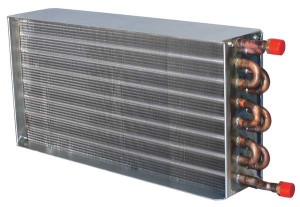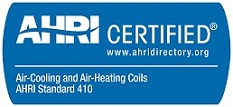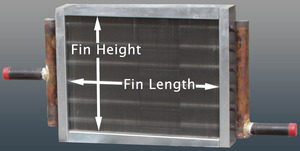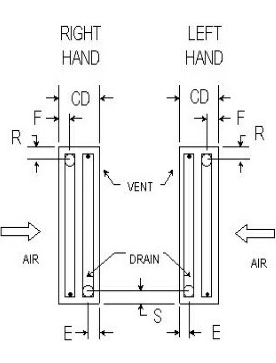We get questions all the time about how we build our HVAC coils, and what will add costs and what will not. This post will address the many inaccuracies other “mass production” manufacturers 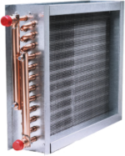 have put out there. It’s very simple. There are only three areas on a coil that will add costs: the casing, the tubing, and the fins. Now we’ll deal with the many inaccuracies that most manufacturers try and “upsell” to you.
have put out there. It’s very simple. There are only three areas on a coil that will add costs: the casing, the tubing, and the fins. Now we’ll deal with the many inaccuracies that most manufacturers try and “upsell” to you.
- Connection sizes: There should be no additional cost switching from a 2” MPT connection to a 3” MPT connection. Only on rare cases with a 4” or 5” connection, should you ever see an adder in price.
- Pitching the casing in a steam coil: All steam coils should be pitched. There is not some mysterious adder you need to pay to have you coil built the right way.
- Casing depth and dimensions: Whether you want your coil 4” deep or 8“ deep, or want a 2” flange instead of a 1” flange, there should be no cost associated with simply more sheet metal.
- Distributors on a DX Coil. This is our favorite. We actually had a call from a contractor who asked how much extra it was to get a distributor on his DX Coil. Distributors come standard with DX coils!
- Flanges for “stackable” coils. This is just standard practice to meet the needs of your customer.
Coil Casing Adders: Most HVAC coils we manufacture are built with 16 ga. galvanized steel casing. We offer 3 other options that are slightly more expensive, but it all depends on your application if any of them are actually needed. Stainless steel casings are used in a corrosive atmosphere and are the most expensive option (even then, it’s only 10-15% more). 14 ga. galvanized steel casings are used primarily in coil banks where you might have between 2-4 coils stacked on one another. This adder for 14 ga. casing is only roughly 2-3% per coil.
Tubing Adders: There are many materials options in tubing and we offer all of them. Whether you need stainless steel, carbon steel, cupro-nickel, or standard copper tubes, we can build exactly what you need. Like any product, the more unusual the material, the more expensive the cost is. For most jobs with just copper tubes, adding a thicker tube wall will add only 10-15% in cost to the job and could double the life of your coil. For just a couple hundred dollars, that coil that would last 10 years could last 20. Some applications, like high pressure steam coils, require a thicker tube wall or more durable material or the life span of that coil will be extremely short. You’d be surprised at how many other manufacturers’ coils we’re asked to rebuild with the correct materials.
Fin Adders: Most coils are offered with aluminum fins with a thickness of .006”. The adders to go up in fin thickness are not much, but always remember, the thicker the fin, the more air pressure drop it’s going to add to your coil. The most costly adder you can do to a coil is adding copper fins. It will double the cost of your coil, and in some cases, be 2.5 to 3 times more expensive. This wasn’t the case 20 years ago, but the price of copper has risen over the last few years. We usually recommend coating your coils instead. It’s far more economical and only adds a week to the lead time.
Capital Coil & Air understands that people do business with you like and who you trust. Coil manufacturers should be an open book with this information. Unfortunately, most try and prey on what you don’t know. Hopefully, this helps with any confusion. Capital Coil & Air looks forward to working with you!
RELATED POSTS
Four Things That You Need When Buying Replacement Coils
10 Things You Need to Know to Buy Replacement Coils Effectively
